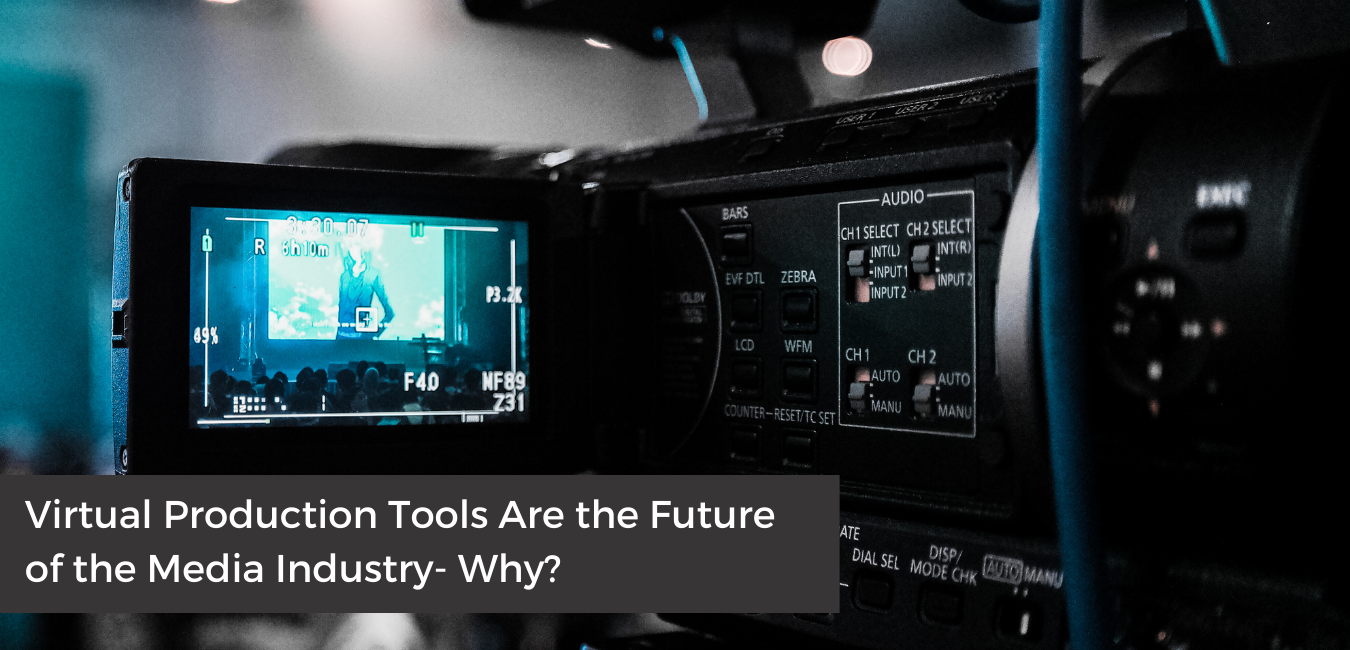Virtual Production Tools Are the Future of the Media Industry - Why?

The pandemic shut down every industry, irrespective of the niche. It was not possible to bring together everyone to start again! The same happened with the media industry. The months of production shutdown made it quite impossible for the industry to restart film production.
Although the proposed guidelines are mentioned, one could start doing it again. But it was easier said than done. However, the inclusion of virtual production helped the directors and VFX professionals to leverage technology.
While the concept isn't new, the pandemic accelerated everyone's interest in virtual production. And why not when it's a complete package of industry, tech, and macroscopic elements. But what's pushing the big and smaller brands to push towards virtual production?
- The breakthroughs and popularity of VFX heavy genres.
- The higher accessibility of game engines and studios.
- Increasing competition between streaming platforms.
All in all, the content desert created by the pandemic led to an increase in the demand for virtual production tools.
Don't find it convincing yet? Let's understand these potential triggers one by one. Let's begin!
The breakthroughs and popularity of VFX heavy genres.
If you consider the top-grossing movies in the last decade, the majority of those films were loaded with visual effects. It's what viewers even look forward to. However, if you think VFX is only limited to Hollywood, you are highly mistaken.
For instance, if you looked at Breathtaking storms or the Mars landing of Perseverance, they used some cool visual effects to build excellent content. Studies even confirm that using such immersive effects like AR or CG can pull the viewers towards TV once again.
In fact, in the month of July, Samsung Electronics announced a partnership with CJ E&M, one of the leading media groups in Asia. They will be combining micro-LED technology to create a virtual production market.
That's something to look forward to!
The higher accessibility of game engines and studios.
Even before the concept of virtual production came to the forefront, digital sets were already a part of the broadcast and live TV. Of course, the prevalence of virtual sets is still in its initial stages. Its power and inclusion in different workflows are increasing swiftly. This modern technology allows creators to design environments as per their respective requirements.
Moreover, the impact of Unreal Engine made it quite big amongst broadcasters as well. It helps them include photoreal content and increases creativity when encountering "problems of today."
Increasing competition between streaming platforms.
The pressure is rising with the disruptive content creators and traditional platforms competing in a plethora of ways. It's not only about content alone. It's more about production, effects, and post-production skills, and talent. And with the COVID-19 pushing the creators more, it has become a competitive advantage to excel in their respective fields.
For instance, if you consider episodic content or feature films, Netflix spends around $15 billion on budget, talent, and VFX quality.
That being said, the primary drivers towards virtual production are "flexibility" and "efficiency." But how is it playing different roles in the production processes? Let's find out more.
The Role of Virtual Production in today's media landscape
If you bring a virtual production element to your set, you can revolutionize the industry in many ways. How?
Stronger Storytelling
Since the filmmakers and content creators can create sets before the actual shoot begins, it allows them to improve the scene and story. So, if you want to change any details, you can do it way before the actual shooting. As per the leading consulting firm, the previsualization of scenes and its ability to integrate special effects are the top reasons everyone is so inclined to use this technology.
Let's give you an example. Remember the famous movie "The Jungle Book." The creators used this technology to study actor positioning and previsualization. This was helpful, especially when they were using a computer-generated bear with Mowgli. This helped them showcase the relationship between the two.
Instant Reviews
Filmmakers can quickly review their shots. In short, no room left for wondering. The fact that you can check your shot immediately save an ample amount of time in post-production. Thus, it allows enhancing creative possibilities.
Reduces Overall Costs
Did you know that reshoots could increase production costs by more than 15%? However, with virtual sets, one can save on travel, transport, location, and a lot more. Plus, you can also minimize post-production rotoscoping.
Plus, one can use the same assets in sequels as well. And this further reduces the cost. A report regarding the creative vision and business value of these virtual production techniques suggested that it is a path to create stories in the best way possible.
Virtual Production Tools Unlocking Creative Vision
Like any other industry, the media industry is already reaching its saturation with the traditional toolset. The introduction of virtual products is not only helping with better creatives, but it's also helping save significant time and costs.
But that's just one side of the coin. It is helping to enhance planning and shooting efficiency. And this is helping to reduce the expensive reshoots as well.
It will allow companies to reduce costs downstream from principal photography. Marketing companies can use the same virtual sets to produce commercials and VFX assets.
Final takeaways- Rethinking Storytelling For Incredible Outputs
Undoubtedly, there are many ways that virtual production is a game-changer. Many leaders are showing its impact on the ongoing production. The use of live-action, motion capture, hybrid camera, and either virtual production techniques are helping creators navigate the challenges of the coronavirus pandemic.
The reports suggest that the costs related to virtual production will come down in time, and the pandemic will further force the industry towards this oath to create breathtaking stories. However, many filmmakers are still doubtful and embracing the change. The confused look on the seasoned professionals is what is still blocking the complete success of this technology as of now.
So, what do you think? Will the production houses shift to these modern trends?








